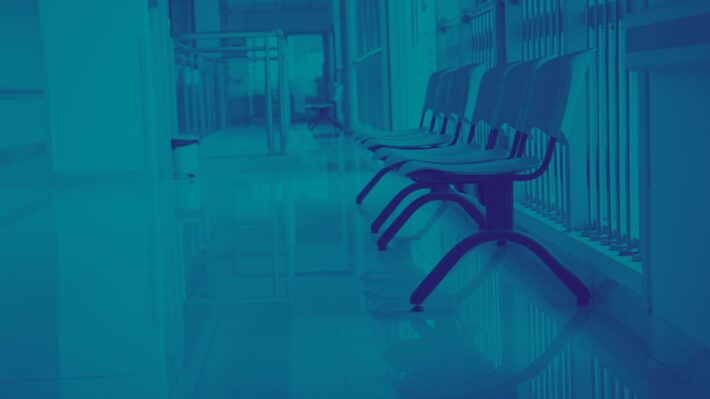6 Types of Outpatient Appointment Scheduling

Outpatient appointment scheduling can quickly become disorganized without the right system in place. Learn 6 types of scheduling your practice could use.
A rise in demand for medical services has a direct impact on outpatient appointment scheduling. If your practice does not have a scalable, organized system in place, you’ll begin to receive complaints from dissatisfied customers and healthcare givers.
It’s crucial for outpatient facilities to devise mechanisms to deal with these issues that impact your healthcare center’s profitability and reputation. Finding the best system for scheduling appointments and patient processing to reduce delays and missed appointments is crucial.
Here are a few approaches to scheduling appointments and patient processing to help you get ahead of demand.
1. Wave scheduling
Wave scheduling is a patient processing mechanism that allocates several—four, five, or six—patients every half an hour. The objective of the approach is to have patients waiting in the queue at any given time.
Patients are not given specific timestamps but are served on a first-come basis. However, this scheduling method often prioritizes ill/emergency cases over regular appointments.
Building time for walk-ins
Another facet of this method is to allocate patients specific times in the first half-hour and leave the second half-hour for walk-ins. The technique helps your medical personnel prioritize appointments and patients with urgent needs.
The administration can use this approach to allocate appointments that’ll take longer in the first hour and shorter needs in the second half-hour.
Here are some additional benefits to adopting a wave scheduling system:
- Minimal wait time. The maximum time a doctor can take serving a patient is 20-25 minutes. Even when there are delays, the cumulative effect has little impact on the following hours. By using the wave + walk-ins method, you’ll notice minimal patient complaints because they receive assurance on their expected wait time.
- Limits overcrowding. Unlike other systems where all your patients wait in the lobby, only the patients in the current half-hour wave occupy the waiting bay.
- Emergencies and walk-ins. The system is flexible, making it easy for you to allocate time for patients requiring emergency care. Plus, your staff has room to give time slots to any walk-in patients.
2. Time slot scheduling
Under this approach, your system provides patients with all available slots. After your patient selects the ideal time, the system prompts them to fill in details and subsequently follows up with an email or confirmation.
When adopting time-slot scheduling, your staff has to monitor for any cancellations—and depending on how last minute they are, quickly fill it with someone else or risk an empty block. Patients, on the other hand, get a sense of priority because they know that the time slot belongs solely to them.
3. Stream scheduling
Stream scheduling, also known as time-specific scheduling involves allocating fixed time to patients. The approach ensures there is a patient at any given moment. Like a stream of water, it provides you with a healthy flow of patients and minimizes their waiting time.
The time allocated for each patient depends on the purpose of the visit. You can assign 10 –15 minutes to established patients and more time (30 – 45 minutes) to patients with comprehensive needs. The extended time is ideal for cases requiring extra attention, such as a physical examination or new patients.
4. Open booking scheduling
With this outpatient appointment scheduling method, patients are given a time frame in an open booking system—say between 10:00 am to 12:00 pm—where they can honor the appointment.
This approach creates sufficient time for consultants to attend to critically ill or emergency cases. If the outpatient facility is not busy, an open booking system helps manage customers’ unpredictable flow by minimizing the average wait time, which helps eliminate complaints.
Here’s why open booking is a great option:
Improved customer service
Backed with solid historical data, hospitals can recommend patients the ideal time to book an appointment. It’s an intelligent way to manage traffic in hospitals and consequently improve your customer’s satisfaction.
Workforce management
If you are a newly established facility, you may not have sufficient resources to employ full-time specialists. Medical care centers can boost the patient’s satisfaction by offering open booking only when a part-time specialist is available.
5. Clustering scheduling
Cluster scheduling is the process of grouping patients with similar health problems or conditions together. Each category or group is allocated a specific time block or day, making it easy to manage them.
You can have clusters such as injections, procedures, physical examinations, or antenatal clinics. Successful clustering relies on the availability of consultants, support staff, equipment, and a quick turn-around time for supportive processes.
Cluster scheduling is an effective method for busy medical centers to manage many patients seeking similar services. It can also reduce the average waiting time for regular patients—for example, clinics for chronically ill patients.
6. Double scheduling
Double scheduling is an approach that allows two patients to book a similar appointment time. Your medical facility can use this approach if a patient has an acute illness or injury and requires urgent attention.
A diagnostic procedure, such as an Electrocardiogram diagnostic, is an ideal opportunity because it’s typically allocated sufficient time. Double scheduling can also work if another medical practitioner is available to cater to the emergency.
Improve your system with outpatient appointment scheduling
Scheduling appointments and patient processing is a complex aspect that requires comprehensive planning and organization. Healthcare facilities without an outpatient appointment scheduling system lose revenue through cancellations, no-shows, and dissatisfied clients.
CCD Health’s patient scheduling is what your medical center needs. We’ll help your medical center improve efficiency, reduce cancellations, and minimize operating costs. Request a Consultation to learn more about patient scheduling best practices.
To learn more about patient scheduling, view the following resources:



